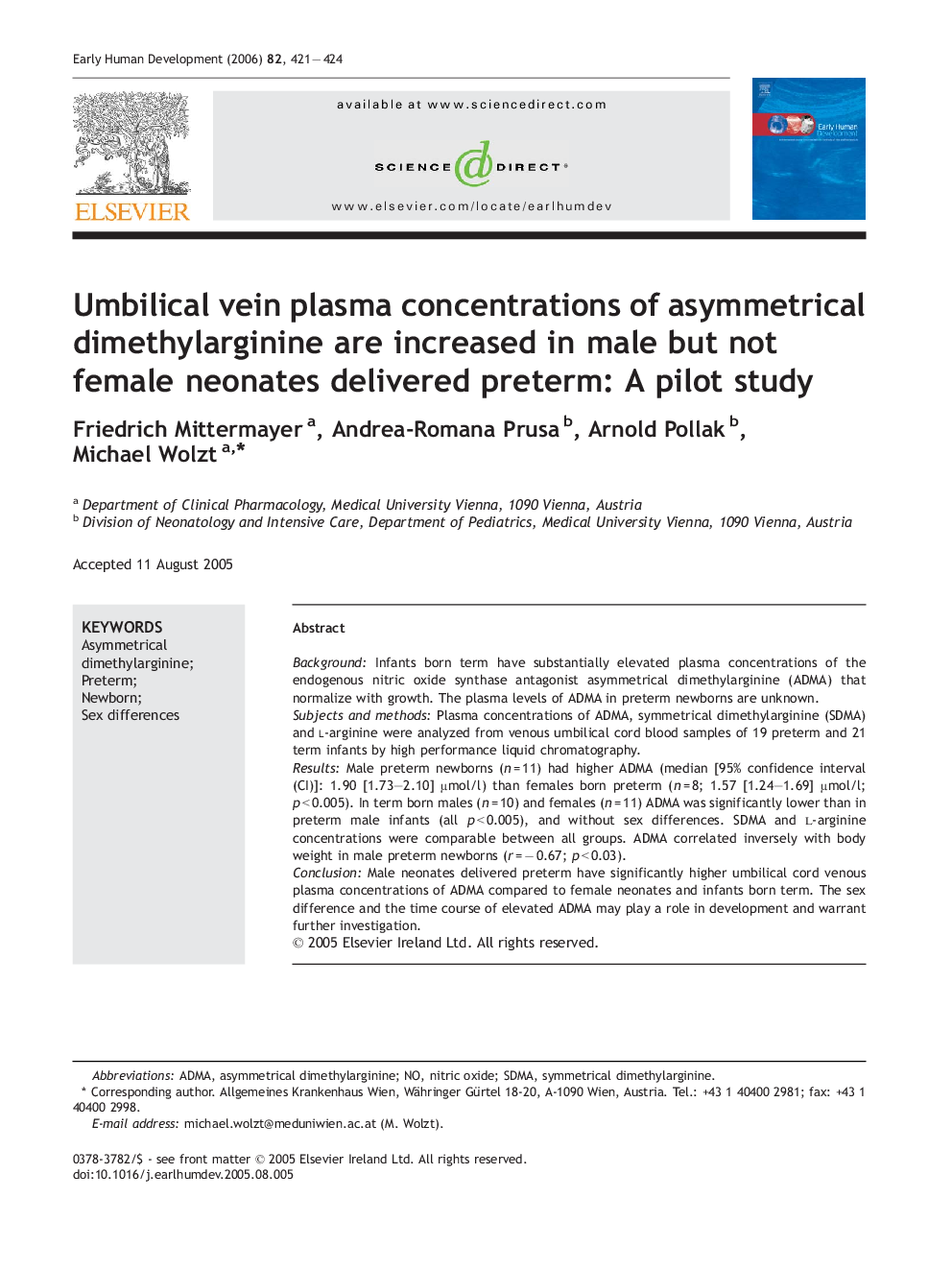| Article ID | Journal | Published Year | Pages | File Type |
|---|---|---|---|---|
| 3918220 | Early Human Development | 2006 | 4 Pages |
BackgroundInfants born term have substantially elevated plasma concentrations of the endogenous nitric oxide synthase antagonist asymmetrical dimethylarginine (ADMA) that normalize with growth. The plasma levels of ADMA in preterm newborns are unknown.Subjects and methodsPlasma concentrations of ADMA, symmetrical dimethylarginine (SDMA) and l-arginine were analyzed from venous umbilical cord blood samples of 19 preterm and 21 term infants by high performance liquid chromatography.ResultsMale preterm newborns (n = 11) had higher ADMA (median [95% confidence interval (CI)]: 1.90 [1.73–2.10] μmol/l) than females born preterm (n = 8; 1.57 [1.24–1.69] μmol/l; p < 0.005). In term born males (n = 10) and females (n = 11) ADMA was significantly lower than in preterm male infants (all p < 0.005), and without sex differences. SDMA and l-arginine concentrations were comparable between all groups. ADMA correlated inversely with body weight in male preterm newborns (r = − 0.67; p < 0.03).ConclusionMale neonates delivered preterm have significantly higher umbilical cord venous plasma concentrations of ADMA compared to female neonates and infants born term. The sex difference and the time course of elevated ADMA may play a role in development and warrant further investigation.
